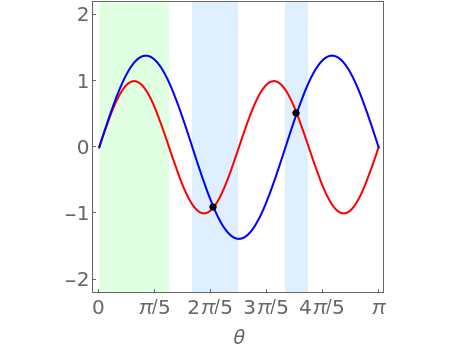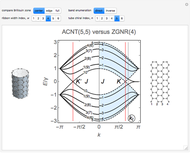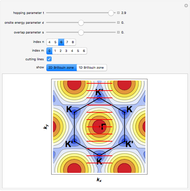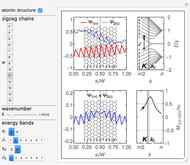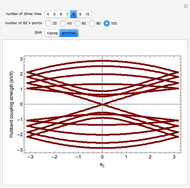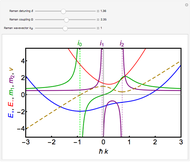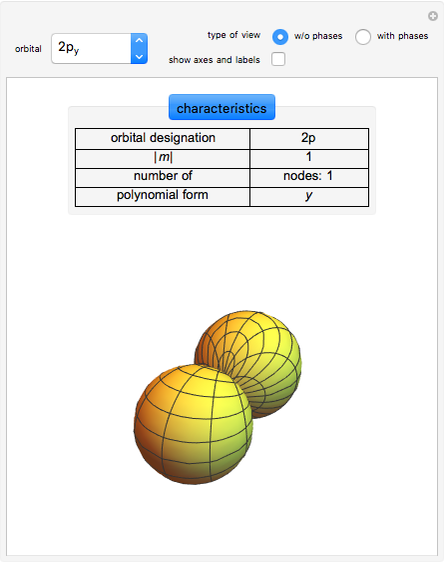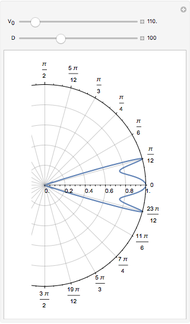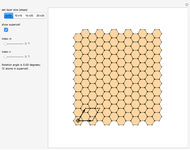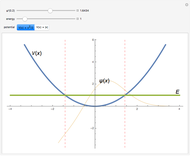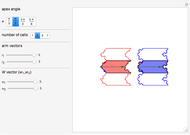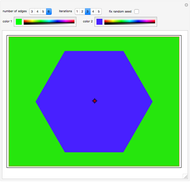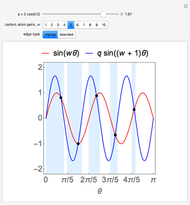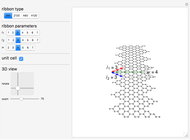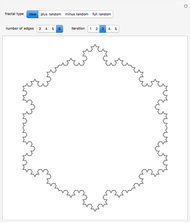Solving the Secular Equation for Zigzag and Bearded Graphene Nanoribbons

Requires a Wolfram Notebook System
Interact on desktop, mobile and cloud with the free Wolfram Player or other Wolfram Language products.
This Demonstration explores the solutions of the secular equations for graphene nanoribbons with zigzag and bearded edges. For graphene nanoribbons with zigzag edges, the secular equation is  , while for a ribbon with bearded edges it is
, while for a ribbon with bearded edges it is  . For ribbons containing
. For ribbons containing  pairs of carbon atoms in their unit cells, these equations quantize the transverse momentum of the electron,
pairs of carbon atoms in their unit cells, these equations quantize the transverse momentum of the electron,  , and couple it to the longitudinal momentum,
, and couple it to the longitudinal momentum,  . The equation for a ribbon with zigzag edges is the same as equation (19) in [1]. The equation for a ribbon with bearded edges,
. The equation for a ribbon with zigzag edges is the same as equation (19) in [1]. The equation for a ribbon with bearded edges,  , is different from the equation
, is different from the equation  given in reference [2]. The sign in front of the second term is of no physical importance, but the minus is more convenient for mathematical treatment, as has been discussed for zigzag ribbons [1].
given in reference [2]. The sign in front of the second term is of no physical importance, but the minus is more convenient for mathematical treatment, as has been discussed for zigzag ribbons [1].
Contributed by: Vasil Saroka (June 2017)
Open content licensed under CC BY-NC-SA
Snapshots
Details
The lowest solutions of the secular equations disappear for  and for
and for  in the case of a zigzag [1] and bearded [2] graphene nanoribbon, respectively.
in the case of a zigzag [1] and bearded [2] graphene nanoribbon, respectively.
Snapshot 1:  solutions in light blue regions for a zigzag graphene nanoribbon
solutions in light blue regions for a zigzag graphene nanoribbon
Snapshot 2:  solutions in the light blue regions and one missing solution in the light green region for a zigzag graphene nanoribbon
solutions in the light blue regions and one missing solution in the light green region for a zigzag graphene nanoribbon
Snapshot 3:  solutions in the light blue regions for a bearded graphene nanoribbon
solutions in the light blue regions for a bearded graphene nanoribbon
Snapshot 4:  solutions in the light blue regions and one missing solution in the light green region for a bearded graphene nanoribbon
solutions in the light blue regions and one missing solution in the light green region for a bearded graphene nanoribbon
The missing solution restored by the analytical continuation  gives rise to so-called edge states [2, 3]. The localization of the solutions
gives rise to so-called edge states [2, 3]. The localization of the solutions  within the light blue regions defines the parity of the electron wavefunction and, therefore, optical selection rules [1].
within the light blue regions defines the parity of the electron wavefunction and, therefore, optical selection rules [1].
References
[1] V. A. Saroka, M. V. Shuba and M. E. Portnoi, "Optical Selection Rules of Zigzag Graphene Nanoribbons," Physical Review B, 95(15), 2017 155438. doi:10.1103/PhysRevB.95.155438.
[2] D. J. Klein, "Graphitic Polymer Strips with Edge States," Chemical Physics Letters, 217(3), 1994 pp. 261–265. doi:10.1016/0009-2614(93)E1378-T.
[3] M. Fujita, K. Wakabayashi, K. Nakada and K. Kusakabe, "Peculiar Localized State at Zigzag Graphite Edge," Journal of the Physical Society of Japan, 65(7), 1996 pp. 1920–1923. doi:10.1143/JPSJ.65.1920.
Permanent Citation
